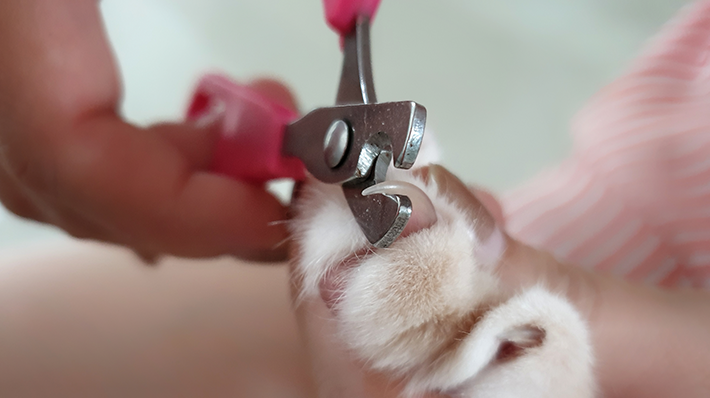
Blog Archives

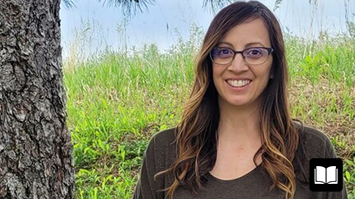
I have been doing nail trims and anal sac expressions in my neighborhood for the last three years. Recently, one of my neighbors had asked on our community Facebook page if someone in the veterinary field could answer a question. Her dog was limping, and she didn’t know what to do. One of the neighbors offered her some doggy aspirin she had bought at the pet store. I quickly advised against giving unprescribed medications to her pet.
The conversation turned into a bullying session. One of my neighbors told me I shouldn’t try to act like a veterinarian. I have never felt so disrespected in the 15 years I have been in this career.
I shut down.
The next thing I knew, I was in my closet, crying, repeating to myself, “I don’t care, I don’t care anymore. Why should I care about others’ pets if I am going to be treated like crap? I’m done.”
I may have been improving with burnout, but I had just hit a whole new level of compassion fatigue.
I had a full weekend’s worth of nail trims to do and was going to make a little more than $200 in five hours. I didn’t care about the extra money anymore and canceled all appointments for the foreseeable future.
In tears, I explained to my husband why I had given up making extra money on the side. It was clear he wanted to help but didn’t know what to say or do. I knew I needed professional help.
Now I’m in the process of finding a therapist I can connect with. Until then, my family and I have adopted the following tools to help reduce stress:
–Simple Habit, a meditation app. My son uses it to fall asleep and settle down. He will ask to meditate to go to sleep now.
–A “coming home” routine: The spouse who is home first allows the second spouse to “finish coming home.” This gives them some quiet transition time to put their bags down, change clothes, and relax. When they’re ready to engage with the other spouse to prepare for the evening, they come out of the bedroom or wherever they choose to decompress.
–Boundaries with kids: I explain to my son that I need time to talk with his dad and ask him to sit quietly and watch a short show or play ABCmouse, a reading app. I also set timers in the house called, “Time to get ready for bed,” “Time for bed,” and “Quiet time is over.”
–Communication: When I start to feel like I’m getting anxious, I communicate how I am feeling and what I need to be able to come back down to earth.
Most of all, we continue to remind each other to slow down, be present, engage, and take time to listen to one another. My husband and I are working to improve our communication with our 3-year-old son so we can help him become an emotionally intelligent person, something his dad and I still work on ourselves.
We make time to have difficult conversations, and when we get into arguments, we try to make it a conversation, being mindful of raised voices, body language, and facial expressions. When necessary, we call each other out in a respectful way, in the moment, to help the other become aware of what they are doing.
The Fear Free way of thinking has helped me in so many aspects of my life. I use the techniques with my own son when he has doctor appointments as well as in everyday life. I communicate with him, making sure he knows what is coming up next, where we are going, what the doctor will do next. He is better behaved and calmer when things are explained to him, in most settings. I think that most children would respond to situations in a calmer manner when a Fear Free or Considerate Approach is taken.
In a work setting, my current team is emotionally intelligent, and all know the battle that I am fighting, which helps. Openly discussing things with your team can not only help you to become stronger but also to be seen with more respect and empathy than if you suffer in silence to spare everyone else’s feelings. Maybe someone on your team is suffering as well and doesn’t have the courage to speak up. Sharing your battles may give them strength to seek help for theirs. I wish more practice managers and owners would spend a day, at least, in a Fear Free certified hospital.
The most important message I want to send is that the battle of burnout is ongoing, and it’s not one you can win on your own. It doesn’t fix itself overnight or with a couple of therapy sessions.
Here is a quote I read frequently from Rachel Ashwell’s book “Painted Stories”:
“There is a time for taking action and creating work, and there is also a time for rest and seeking new ideas. Learning when you need space will help you to build a more sustainable creative practice.”
Check out our Fear Free on the House page for resources on wellness, quick tips, and more!
This article was reviewed/edited by board-certified veterinary behaviorist Dr. Kenneth Martin and/or veterinary technician specialist in behavior Debbie Martin, LVT.
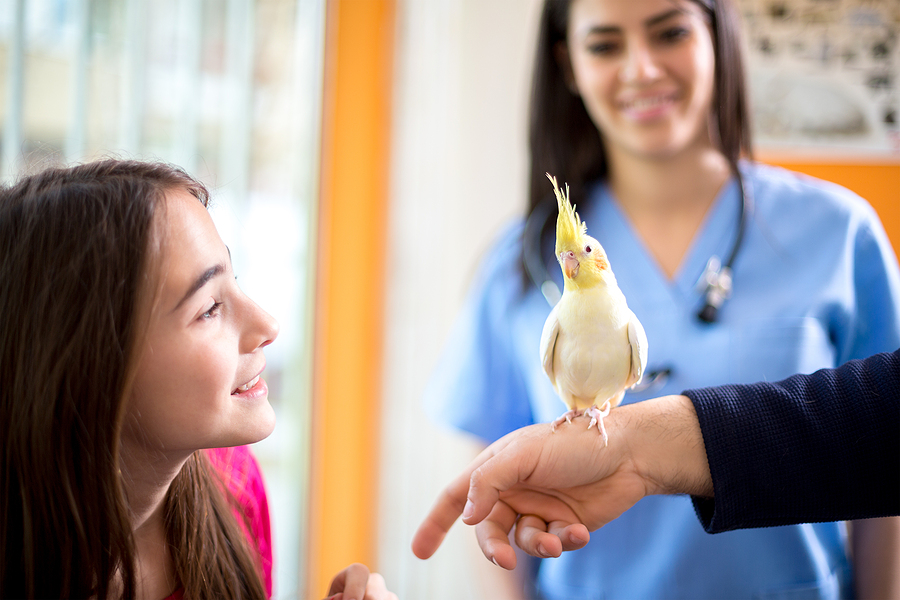
But what happens when things do not go as planned? What if expectations are too high and the pet obtained is unable to live up to the client’s expectations? Biting, screaming, and feather picking are parrot behaviors that many new owners are not prepared for when they acquire their pet. In the avian world, euthanasia is much less likely as most veterinarians are hesitant to end a bird’s life due to the client’s convenience, but this makes it more likely that the bird will be rehomed multiple times.
What if we were able to prepare our avian clients for behavioral problems before they start? What if avian rescues could work to teach birds specific cued behaviors to help eliminate aggression in some of these pets?
Psittacine preparatory programs or avian prep programs can be life-changing for birds and a great resource for owners to understand normal bird behavior, create realistic long-term expectations, and work toward creating an environment that is mentally and behaviorally enriching. They also help teach cued foundation behaviors used to eliminate and replace unwanted behaviors (just as we do with dogs and cats). Avian prep programs can help to strengthen the human-animal bond, keep birds in a home long-term, and increase the bond between client, bird, and clinic. Bonus: offering such programs also increases revenue through fees and the sale of products and treats.
Creating the Course
Who will teach the courses? What are the most important topics to teach? What foundation behaviors are most important and why? These are all great questions and we will break them down below:
Educator/Instructor: An avian veterinarian or veterinary technician with a special interest in birds should instruct this course. The individual should be knowledgeable in avian communication, body language, forms of enrichment, and use of positive reinforcement for training. An exotic-animal trainer may be an ideal instructor if one is in your area. This trainer should use and recommend positive reinforcement. Avoid use of aversive training techniques, which can increase fear, stress, and anxiety in all species.
Curriculum Breakdown
I recommend creating a four-week course. The first two weeks can be taught virtually or in person without the client’s bird present. The goal in the first two weeks will be to review the basics of avian communication, enrichment and environmental set up, learning theory and use of positive reinforcement (with a marker), and answer client questions. The third and fourth classes will focus on teaching cued behaviors with the birds present in the hospital. (See the chart below)
To prevent potential disease transmission or other risks for birds brought to class, take the following measures:
- Waiver (indicating risk to client, bird, etc.)
- One owner per bird
- Clients should bring their own equipment and reinforcers (carriers, towels, etc.)
- Birds will need to have a current examination by a veterinarian, complete blood cell count, and Chlamydophila screening in the past year.
- Old World parrots such as African greys, lovebirds, and cockatiels must have a negative test for circovirus
- All unwanted behaviors (feather picking, etc) should have been medically worked up prior to working solely on behavior.
| Class | Topic and Discussion Points |
| Class One (Humans Only) | · Introduction and Client Problem Behavior Discussion (Why are they here and what are they seeing at home?)· Avian Communication
· Environmental Enrichment/Management |
| Class Two (Humans Only) | · Environmental Enrichment/Management (cont.)· Learning Theory and Using Marker Training
· Marker Mechanics and Preparing for Birds in Class |
| Class Three (Humans and Birds) | Break down into 5- to 10-minute training sessions with short breaks in between.· Name Orientation
· Target · Step to Me · Off · Station Training |
| Class Four (Humans and Birds) | Break down into 5- to 10-minute training sessions with short breaks in between.· Name Orientation
· Target · Step to Me · Off · Station Training |
Foundation Behaviors to Teach
The following behaviors can be useful to have trained and generalized prior to problem behaviors starting. Response Substitution is a term used when we want to replace an unwanted behavior with a new behavior. Teaching and creating strong cued behaviors can help to eliminate and give alternative responses in situations involving attention-seeking or aggression.
Name Orientation: Teaching birds their name can help with obtaining their attention to interrupt unwanted behaviors and ask them to offer a different behavior.
Target Training: This behavior can be used to teach the bird to move from one place to another by teaching them to place their beak near the target.
Step to Me: Cue a bird to move to handler’s arm or hand to be transported from one place to another.
Off: Cue bird to move off of handler during periods where conflict may occur.
Station Training: Teach bird to go to a specific location on cue. This can be used as an alternative behavior.
Avian prep programs and training classes are currently scarce but ideally courses like this will become as routine as dog training classes. Pet birds deserve just as much of a chance to be successful in the home environment as dogs or cats. If you or others you know are teaching a course like this, please update us on the Fear Free for Professionals Facebook Group. We would love to see your photos and ideas for these courses as well as your feedback!
Resources
Luescher, Andrew. Manual of Parrot Behavior. Blackwell Publishing. 2006
Shaw, Julie K. and Martin, Debbie. Canine and Feline Behavior for Veterinary Technicians and Nurses. Wiley & Sons, Inc. 2015.
This article was reviewed/edited by board-certified veterinary behaviorist Dr. Kenneth Martin and/or veterinary technician specialist in behavior Debbie Martin, LVT.
Rachel Lees, an Elite Fear Free Certified Professional, is a veterinary technician specialist in behavior, a KPA certified training partner, and veterinary behavior technician at the University of Tennessee College of Veterinary Medicine. She loves helping people create and maintain a strong human-animal bond.
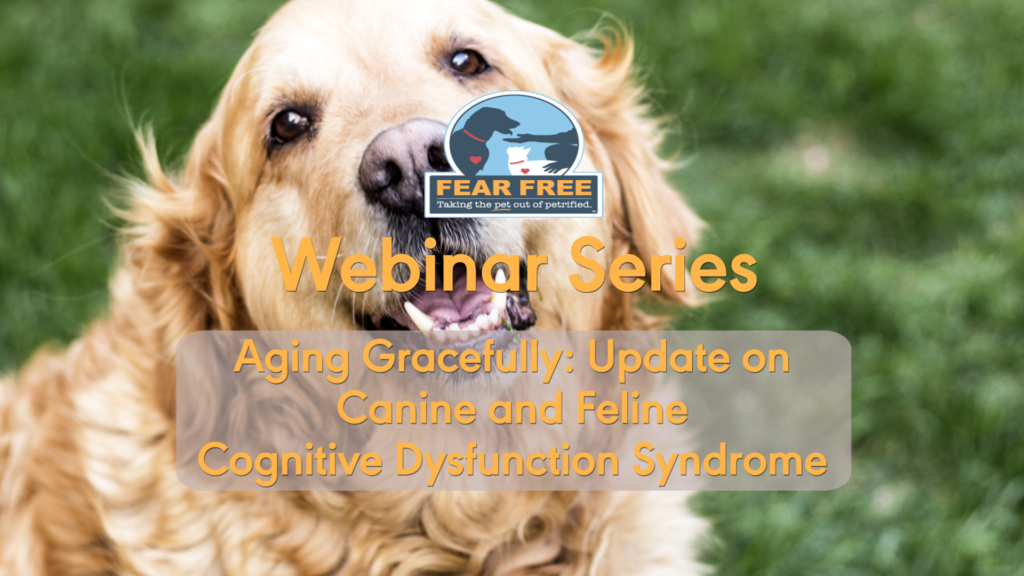
In part due to the excellent veterinary care that we deliver to our patients, we are presented with more geriatric cats and dogs now than we were 10 years ago. Most of us didn’t learn much about how to recognize and treat cognitive dysfunction syndrome (CDS) in dogs and cats. In this session, attendees will learn the most up to date prevention strategies and treatments of CDS in dogs and cats.
In this webinar, Lisa Radosta, DVM, DACVB, will cover:
1. The most common clinical signs of CDS
2. The most commonly used treatments
3. How non-medical treatments can be effective in the management of CDS patients
About the Presenter
Lisa Radosta, DVM, DACVB, graduated from the University of Florida College of Veterinary Medicine in 2000. After completing an internship in small animal medicine and surgery at Coral Springs Animal Hospital, she worked as a primary care veterinarian for two and a half years. She completed a three-year residency in behavioral medicine at the University of Pennsylvania in 2006 and passed the board examination later that year. During her residency, she received the Resident Research Award from the American College of Veterinary Behaviorists (ACVB) two years in a row.
Dr. Radosta lectures nationally and internationally for veterinary professionals and pet owners and is the author of a number of textbook chapters and scientific research articles, She also co-authored “From Fearful to Fear Free: A Positive Program to Free Your Dog from Anxiety, Fears, and Phobias” with Dr. Marty Becker, Mikkel Becker, and Wailani Sung.
She is the section editor for Advances in Small Animal Medicine and Surgery and served on the 2015 AAHA Canine and Feline Behavior Management Guidelines Task Force.
This webinar is brought to you by our friends at Zoetis Petcare.
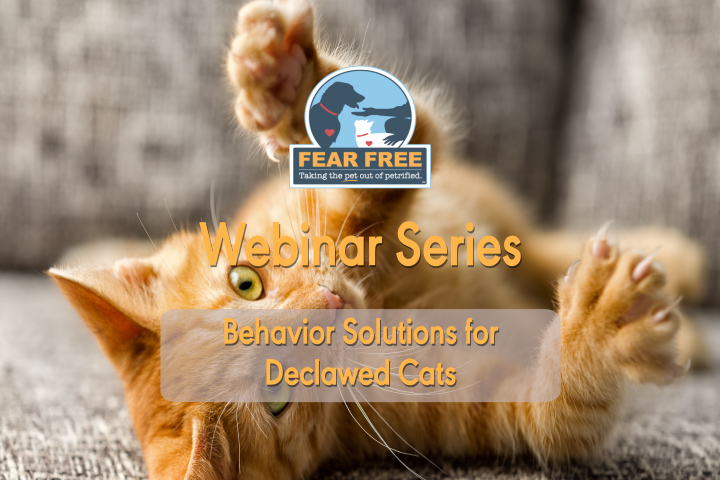
Behavior Solutions for Declawed Cats with Dr. Lisa Radosta
An important part of setting a declawed cat up for successful life at home is understanding and molding their behavior. Join Lisa Radosta, DVM, DACVB, a leader in behavior and a member of the Fear Free Advisory Team, as she discusses behavioral solutions for declawed cats to help reduce their fear, anxiety, and stress both at the clinic and at home.
About the Presenter
Lisa Radosta, DVM, DACVB, graduated from the University of Florida College of Veterinary Medicine in 2000. After completing an internship in small animal medicine and surgery at Coral Springs Animal Hospital, she worked as a primary care veterinarian for two and a half years. She completed a three-year residency in behavioral medicine at the University of Pennsylvania in 2006 and passed the board examination later that year. During her residency, she received the Resident Research Award from the American College of Veterinary Behaviorists (ACVB) two years in a row.
Dr. Radosta lectures nationally and internationally for veterinary professionals and pet owners and is the author of a number of textbook chapters and scientific research articles, She also co-authored “From Fearful to Fear Free: A Positive Program to Free Your Dog from Anxiety, Fears, and Phobias” with Dr. Marty Becker, Mikkel Becker, and Wailani Sung.
She is the section editor for Advances in Small Animal Medicine and Surgery and served on the 2015 AAHA Canine and Feline Behavior Management Guidelines Task Force.

Join world-renowned animal behaviorist, award-winning author, and subject of an Emmy-award winning film Temple Grandin, Ph.D., as she takes a tour of a veterinary hospital with Fear Free founder Dr. Marty Becker and describes what she sees, hears, and experiences. Learn through Dr. Grandin’s first-hand observations how we can better “see” things from animals’ perspectives and how even small improvements, exactly like the ones taught in Fear Free’s Veterinary Certification Program, can make a world of difference for cats and dogs.
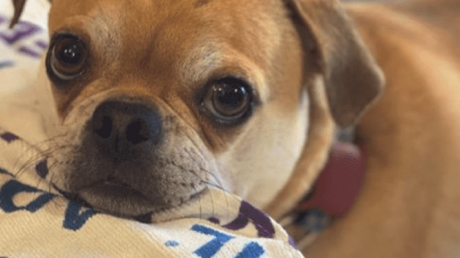
Course Overview
The chin rest is a valuable cooperative care behavior that allows for a hands-off, consensual way to keep an animal still for veterinary exams, husbandry care, grooming, and other procedures. A chin rest serves as an indication from the animal that he is ready to engage in a handling or care procedure. By giving him a choice to “opt out,” even for a few seconds, chin rest empowers the animal to have a voice and greatly reduces his FAS.
In this course, you will learn the steps for training a solid chin rest behavior to an advanced level and discover its many practical, on-the-job applications.
This course includes three lessons:
- Lesson 1: Strategies and Equipment
- Lesson 2: Training and Problem Solving
- Lesson 3: Taking it to the Next Level
This course was written by Mikkel Becker, CTC, KPA CTP, CBCC-KA, CPDT-KA, CDBC.
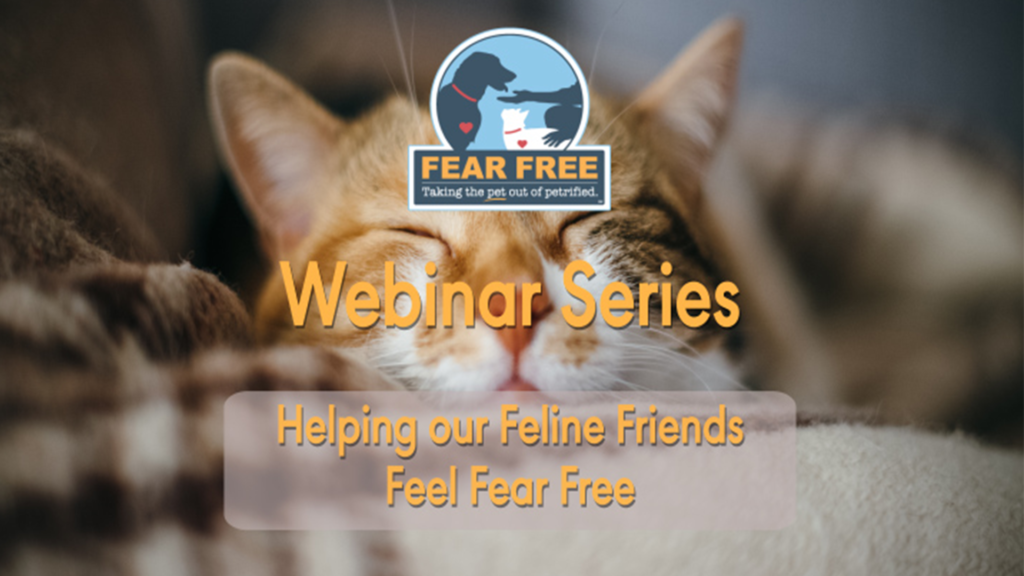
Helping Our Feline Friends Feel Fear Free with Dr. Tony Buffington
In this webinar, Tony Buffington, DVM, PhD, Clinical Professor UC Davis School of Veterinary Medicine, will remind participants “who cats are” and why they are particularly prone to fear in confined situations (i.e., hospitals, shelters, homes, etc.) After defining fear and stress in cats, Dr. Buffington will explain what people can do to minimize their fear, particularly in caged contexts—including how to enrich the cat’s surroundings, both inside and outside of the cage, and how to recognize both red and green flags by “asking” the cat. Resources for training staff and where to learn more about effective environmental enrichment for cats will also be provided.
After this presentation, attendees will be able to:
1. Recognize fear in confined cats
2. Identify threats that may be causing the fear response
3. Reduce fear by making changes in the cat’s environment
Brought to you by our friends at Virox, makers of Rescue disinfectants

Lindsay Pollard, FFCP (Veterinary), the hospital’s practice manager, says they began trying out some Fear Free methods after hearing about the concept. “A few of our staff members obtained individual certifications,” Pollard says. “After learning more and attending a few conferences where Fear Free was highlighted, we decided to go all the way.” Hanover Veterinary Hospital completed the program to become Fear Free certified in December 2018.
When deciding to become a Fear Free Practice, the biggest difference has been in the way he interacts with the animals after certification, says owner Jeremiah Bieszczak, DVM. “The biggest change has been reading body language and emotional state/stress level and addressing that instead of pushing through it. We are better able to read pets and have more tools and knowledge to deal with these situations.”
Many long-term clients are delighted with the constructive visits they’ve had with Fear Free, and new clients are thrilled with the difference between them and their previous veterinarian, says Pollard. Oftentimes they mention the care and compassion used when handling their pets. Pollard feels they’ve made much progress with many of the patients since becoming Fear Free certified.
Fear Free helps all pets, but scared pets often need Fear Free much more to turn their lives around. Pollard has one patient in particular whom she’ll always remember and says Fear Free methods changed everything for this dog.
The pet was a 14-year-old female shepherd mix. Sally, who has since passed away, desperately needed help. “Prior to our Fear Free certification, both Sally and her owner, Sara Zilz, dreaded coming to the vet. She also had some fear aggression and anxiety issues at home. She had a very high FAS and was fearful to the point of aggression,” says Pollard. “Our exams with her were very limited at best and it took several staff members to accomplish anything with her at all.”
Sally had been adopted by Zilz from the humane society when she was 9 weeks old. She didn’t notice any problems with Sally until she took her for training and Sally became spooked by large signs in the store hanging over her head. Then she began showing other fearful behaviors. Zilz says Sally disliked smoke from the grill and even hated when someone blew out a candle. She started having food-guarding issues and was even afraid of shadows on walks.
Zilz says she never thought about potential problems at the veterinarian’s office. “I had her boarded at Hanover. Dr. Bieszczak came out when I picked her up and nicely said something along the lines of ‘She needs to be medicated before we will take her for another boarding.’ This broke my heart. I did not realize she was that bad.”
A veterinary technician named Bobbi became Sally’s best friend when she was boarded. Bobbi would sit in her kennel with her and try to get her to come out. She wouldn’t even go outside to potty. Bobbi called Zilz several times and asked if she could do some things to help her. After that, Bobbi became Sally’s veterinary technician of choice.
After they became Fear Free certified, Bieszczak started Sally on fluoxetine, an anti-depressant. This medication was a game-changer for her. Pollard says they also started doing happy visits with Sally, using treats with her during exams and treatment, and including calming pheromone products during her happy visits and exams/treatment. They also tried to keep the same staff member working with her all the time, and kept detailed notes on her likes and triggers, constantly adapting their plan and approach to better suit Sally individually.
“She made more progress with each happy visit and regular visit until eventually she was happy to see several staff members,” Pollard says, “and she was happy coming into the building. Sally would readily accept most treatment from us with the help of some treat distractors and enforcers.”
“At one point, I felt everyone wanted to give up on Sally. Once I saw the Hanover Veterinary Hospital staff was not giving up on her, I knew things would be okay,” says Zilz.
This article was reviewed/edited by board-certified veterinary behaviorist Dr. Kenneth Martin and/or veterinary technician specialist in behavior Debbie Martin, LVT.
Sandra Toney has been writing about cats for over 25 years and is an award-winning member of Cat Writers Association and Dog Writers Association of America. She has written for many print and online magazines about cat health and behavior as well as authoring eight books. She lives in northern Indiana with her cat, Angel.
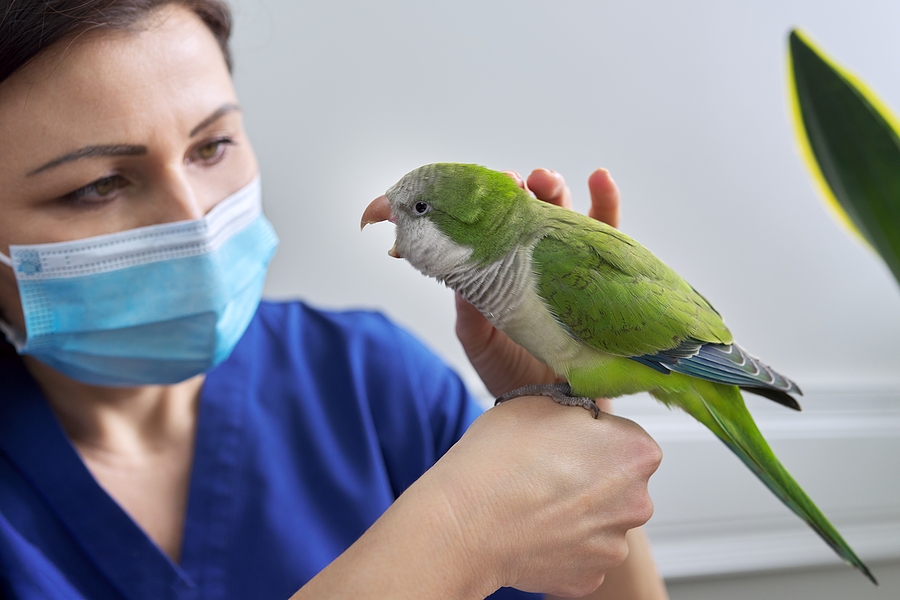
With feathered companions, this is especially important, as many avian behavioral issues may be related to lack of environmental stimuli; specific relationships with members of the household; the owner’s behavior; and daily schedule and routine, to mention a few key pieces of behavioral history taking. Most veterinary behaviorists require a client to complete a behavioral questionnaire prior to the pet’s appointment, but even with this information, they must act as detectives, sifting through the information and asking further questions in the examination room.
This article will discuss four aspects of collecting an avian behavioral history. Having a thorough understanding of the situation can help the veterinary team reach a diagnosis.
Gaining Client Trust
This first step is an important factor in taking a history, even though it doesn’t relate to the bird’s behavior. Veterinary professionals should present themselves in a way that promotes and creates an open and honest relationship with the pet owner. If the client feels judged, the history obtained may not be accurate history, leading to misdiagnosis.
Humans communicate visually and verbally. Actively listening and appearing open, sympathetic, and relaxed are important when entering the room to evaluate the patient and meet the owner. When in an exam room with clients, I mention specific behaviors that may be challenging to ignore and tell the client that everyone makes mistakes and we all lose our tempers. I evaluate the client’s nonverbal body language and based on that, I may state that there is zero judgment in this space and that we are a safe zone. We support owners and understand that they are in the office to help their pet. It is not our job to judge, but to help the owner and pet move forward.
Abnormal vs. Normal Behavior
Clients who obtain parrots may or may not fully understand normal parrot behavior. Many clients bring their bird in for behavioral evaluation only to learn that the behavior is normal for that species. Parrots, for instance, are inherently loud, destructive, and messy. The parrot walking into the consultation is going to be the same parrot walking out. Giving the client clear expectations can be informative for clients and help them understand long-term goals for modification of unwanted behaviors. Communicating that some of these behaviors are normal can educate the client and lead to a discussion on how to manage the behavior moving forward.
Observing Behavior
This can be the most challenging part of obtaining the behavior history. It is important for the veterinary professional to witness typical behavior for the bird. With birds, the majority of behavior is going to be displayed in their home environment where they feel most comfortable. Most birds will alter their behavior in the presence of unfamiliar people. While using video to evaluate the behavior is valuable, it may add new, potentially “scary” stimuli to the situation, and this may influence the bird’s behavior.
To help to counteract this, have the client bring the camera or tripod into the environment a few days prior to collecting video and data. This should help the bird habituate to the camera and reduce or eliminate behavior changes. In the text Manual of Parrot Behavior, edited by Andrew Luescher, DACVB, it is recommended that clients film the following prior to the consultation:
- Interactions with each household member (or members of the home who routinely interact with the bird)
- Interactions with owner during:
- Meals/eating
- Playing
- Snuggling
- Routine behavior in the cage (with owner in the room)
- Routine behavior in the cage (without the owner present)
- Film a “Bird View” video of what the bird sees from the cage
- Full circle view
The goal of these videos is to give the veterinary professional insight to how the bird interacts at home. The veterinary team can then read and understand the animal’s body language as it is displayed during each circumstance or situation. Caution the client against purposefully eliciting aggressive behavior or frightening the bird. The goal is for the videos to provide a glimpse of the bird’s everyday behavior and comfort level with interactions and surroundings.
Evaluating Physical Environment
The bird’s environment can play a large role in normal or abnormal behavior patterns. This can become a concern when diagnosing a behavior condition. When evaluating the pet’s physical environment, look at the following:
- The bird’s cage
- Size
- Construction
- Cleanliness: A dirty cage space can cause increased stress and anxiety
- Location: Where is the cage located? In the common room with the family and or owners? Is it in an isolated space away from human interaction? Is it in the center of the room? Certain locations can increase stress and anxiety.
- Stimuli and surroundings near the cage: The cage is where the bird spends a large amount of time. Since parrots are a prey species, certain sounds, objects, or conditions may be more concerning to them, causing increased fear, stress, and anxiety. Specific objects such as clocks or portraits may increase stress and anxiety (“Why is the scary portrait staring at me?”). Loud sounds, cigarette smoke, and air quality are other factors that can make the parrot uncomfortable.
- Toys and enrichment:
- Are perches and play gyms present in a social gathering space? This may suggest that the bird is able to loosely and comfortably play and interact with the equipment in the presence of people and other unknown stimuli.
- Assess the type of toy, size, construction materials, and suitability. Toys that are too challenging become uninteresting. Each toy should match the preference of the bird. Variation and rotating toys can be a useful tactic to keep toys as “fun” as possible. Some birds may not know how to play with toys, and for this reason may be more dependent on and bonded to the owner.
Veterinary professionals may also request that the client submit a video tour of the home. This can aid them in knowing what the pet may be experiencing based on human movement, placement of items, and daily routine.
These are just a few of the considerations to take into account when obtaining an avian behavioral history. Other areas to assess and discuss are the patient’s signalment, breed, developmental history, prior environmental information, and grooming. We will dive into other aspects of taking an avian history in a future blog post.
Reference:
Luescher, Andrew. Manual of Parrot Behavior. Blackwell Publishing. 2006
This article was reviewed/edited by board-certified veterinary behaviorist Dr. Kenneth Martin and/or veterinary technician specialist in behavior Debbie Martin, LVT.